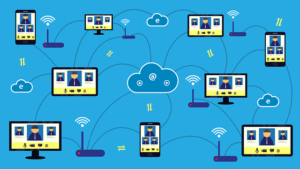Introduction:
The E-Rate program has been instrumental in providing schools and libraries across the United States with the resources needed to enhance their telecommunications and internet infrastructure. Through E-Rate funding, educational institutions have been able to implement innovative projects and initiatives that have had a significant impact on student learning and community engagement. In this article, we will explore some inspiring success stories highlighting the transformative power of E-Rate funding.

Digital Equity in Rural Communities:
- In rural areas where access to high-speed internet is limited, E-Rate funding has been instrumental in promoting digital equity. One success story comes from a small rural school district in Appalachia, which used E-Rate funds to upgrade its outdated internet infrastructure. With improved broadband connectivity, students gained access to online educational resources, virtual field trips, and interactive learning platforms. As a result, student engagement and academic achievement increased, and the community benefited from enhanced access to online services and information.
Bridging the Homework Gap:
- In urban neighborhoods where many families lack access to reliable internet at home, E-Rate funding has helped bridge the homework gap. One school district in a low-income urban community used E-Rate funds to provide students with take-home Wi-Fi hotspots and devices. By subsidizing the cost of broadband services for underserved families, the district ensured that all students had access to the internet outside of school hours. As a result, students were able to complete homework assignments, conduct research, and participate in online learning activities, leading to improvements in academic performance and graduation rates.
Empowering Digital Learning:
- E-Rate funding has empowered schools to embrace digital learning and incorporate technology into the curriculum. In a suburban school district, E-Rate funds were used to equip classrooms with interactive whiteboards, tablets, and educational software. Teachers received training on integrating technology into instruction, and students were provided with access to digital textbooks and online learning resources. The infusion of technology transformed teaching and learning, fostering student engagement, creativity, and critical thinking skills.
Community Connectivity Centers:
- Libraries serving as community connectivity centers have leveraged E-Rate funding to expand access to high-speed internet and digital resources. In an urban library, E-Rate funds were used to upgrade Wi-Fi infrastructure, create computer labs, and provide technology training workshops for patrons. The library became a hub for digital literacy, job training, and online services, empowering residents to access educational opportunities and bridge the digital divide.
Innovative STEM Initiatives:
- E-Rate funding has supported innovative STEM initiatives aimed at enhancing student interest and achievement in science, technology, engineering, and mathematics. One school district used E-Rate funds to establish a STEM lab equipped with robotics kits, 3D printers, and engineering design software. Students participated in hands-on STEM projects, competitions, and internships, developing critical STEM skills and preparing for future careers in STEM fields.
Conclusion:
These success stories illustrate the transformative impact of E-Rate funding on schools, libraries, and communities across the country. By investing in telecommunications infrastructure, broadband connectivity, and digital learning resources, E-Rate funding has empowered educators, enriched student learning experiences, and promoted digital equity. As we continue to leverage E-Rate funding to expand access to high-speed internet and technology, we can build a more inclusive and innovative education system that prepares all students for success in the digital age.



